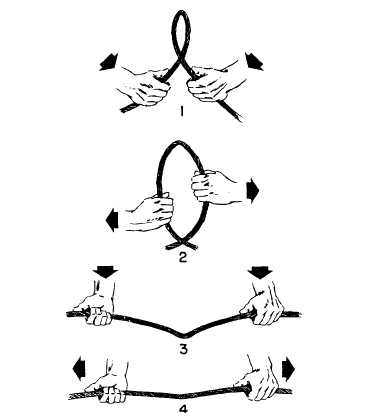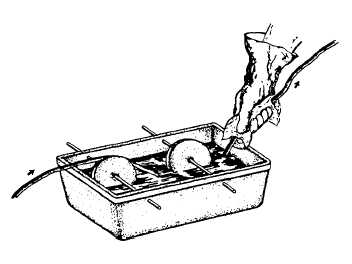
Figure 4-12. - The correct way to takeout a loop in wire rope.
Lubrication
Used wire rope should be cleaned at frequent intervals to remove any accumulation of dirt, grit, rust, or other foreign matter. The frequency of cleaning depends on how much the rope is used. However, rope should always be well cleaned before lubrication. The rope can be cleaned by wire brushes, compressed air, or steam. Do not use oxygen in place of compressed air; it becomes very dangerous when it comes in contact with grease or oil. The purpose is to remove all old lubricant and foreign matter from the valleys between the strands and from the spaces between the outer wires. This gives newly applied lubricant ready entrance into the rope. Wire brushing affords a good opportunity to find any broken wires that may otherwise go unnoticed.
Wire rope is initially lubricated by the manufac- turer, but this initial lubrication isn't permanent and periodic reapplications have to be made by the user. Each time a wire rope bends and straightens, the wires in the strands and the strands in the rope slide upon each other. To prevent the rope wearing out by this sliding action, a film of lubricant is needed between the surfaces in contact. The lubricant also helps prevent corrosion of the wires and deterioration of fiber centers. A rusty wire rope is a liability! With wire rope, the same as with any machine or piece of equipment, proper lubrication is essential to smooth, efficient performance.
The lubricant should be a good grade of lubricating oil, free from acids and corrosive substances. It must also be of a consistency that will penetrate to the center of the core, yet heavy enough to remain as a coating on the outer surfaces of the strands. Two good lubricants for this purpose are raw linseed oil and a medium graphite grease. Raw linseed oil dries and is not greasy to handle. Graphite grease is highly resistant to saltwater corrosion. Of course, other commercial lubricants may be obtained and used. One of the best is a semiplastic compound that is thinned by heating before being applied. It penetrates while hot, then cools to a plastic filler, preventing the entrance of water.
One method of applying the lubricant is by using a brush. In doing so, remember to apply the coating of fresh lubricant evenly and to work it in well. Another method involves passing the wire rope through a trough or box containing hot lubricant (figure 4-13). In this method, the heated lubricant is placed in the trough, and the rope passed over a sheave, through the lubricant, and under a second sheave. Hot oils or greases have very good pene- trating qualities. Upon cooling, they have high adhesive and film strength around each wire.
As a safety precaution, always wipe off any excess when lubricating wire rope. This is especially important where heavy equipment is involved. Too much lubricant can get on brakes or clutches, causing them to fail. While in use, the motion of machinery

Figure 4-13. - Trough method of lubrication.
Continue Reading